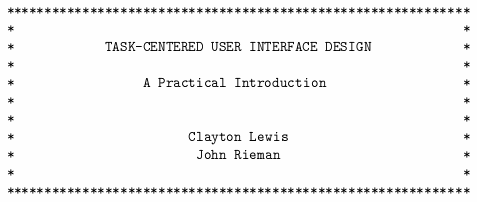The Peanut Butter Theory of User Interface Design
Task-Centered User Interface Design is a 1993 book delivered in digital shareware form, and also available as a PDF. Although it’s almost fifteen years old, it’s still highly relevant – a testament to the timelessness of studying human interface design principles. It was written by Clayton Lewis and John Rieman, who were at the University of Colorado at the time. It looks like Rieman works on usability for Nokia now, but Lewis is still teaching HCI in the UC Boulder computer science department.

The book presages so many things we now accept as standard in the usability community: paper drafts, user personas, effort metrics, prototyping, testing, and iteration. It’s solid advice written well. And it opens with this crucial warning:
We’ve designed this book to be most useful for people who are actually developing user interfaces. That’s in contrast to the full-time interface professionals who do research and evaluation in large corporations. We strongly believe that effective interactive systems require a commitment and an understanding throughout the entire development process. It just won’t work to build a complete system and then, in the final stages of development, spread the interface over it like peanut butter.
Usability is something everybody on your team – not just the designers – should be thinking about throughout the lifecycle of your project. If your development team suffers from the delusional peanut butter theory of user interface design, perhaps they should find time to read through Task-Centered User Interface Design, too.





